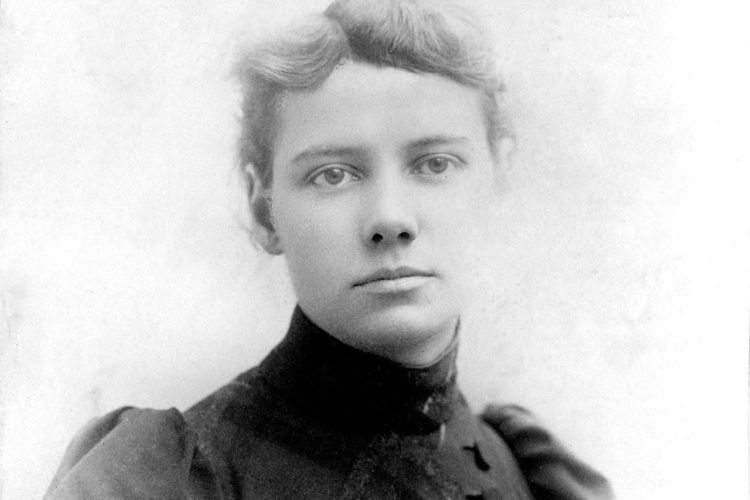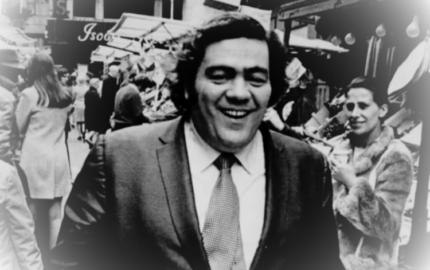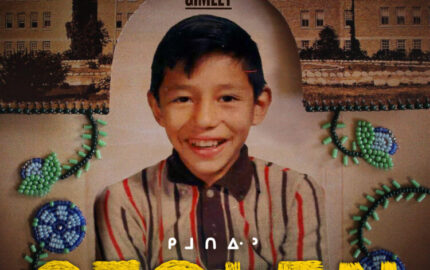A while ago, preparing to teach a literary nonfiction class, I reread Nellie Bly’s “Ten Days in a Mad House,” her account of going undercover in 1887 into Blackwell’s Insane Asylum for Women. Bly is known for her bravery — which is considerable — but I was just as struck by her writing style. The work is completely readable more than 130 years later. No tangled Henry James sentences. No dusty phrases. No archaic jargon or classical literary references that high-end 19th century writers loved. Bly created a vivid first-person narrator, funny and self-mocking; told the story in gripping, dialogue-heavy scenes; and brought readers into places rarely written about at the time — those dominated by women. It was a model of narrative nonfiction.
And readers loved it, snapping up copies of The New York World, where the articles first appeared. As a result, Bly didn’t just fling open the door of Blackwell’s Asylum. She also flung open the door to a decade’s worth of opportunity for female investigative reporters.
Women across the country found their way into newspaper offices, eager for the chance for well-paying, worthwhile jobs, ultimately writing hundreds of articles on topics from prison conditions to toxic cosmetics. Many wrote under pen names; Bly was the pseudonym of Elizabeth Cochran Seaman. Though their work would later be dismissed as “sensations” and “stunts,” their storytelling innovations built the foundation of literary journalism.
Here’s a look at a few of the women and their most famous pieces, documented in my recent book: “Sensational, The Hidden History of America’s ‘Girl Stunt Reporters.’”
HELEN CUSACK (“Nell Nelson”) — Memorable characters and their paychecks
Assignments came quickly on the heels of Bly’s triumph. Nine months later, a schoolteacher named Helen Cusack disguised herself to gain entry to Chicago’s factories.
Before Jacob Riis, before Upton Sinclair, before Lewis Hine, Cusack exposed child labor, sexual harassment and dangerous working conditions in her series “City Slave Girls,” which ran in The Chicago Times from July 30, 1888, deep into August.
Adopting the pseudonym “Nell Nelson,” she established a buoyant mood:
According to instructions from The Times, I made up for the role of shop-girl, and with a list of factories in one hand and a gentle peace in the other [,] sailed down State Street under a brown braize veil as impenetrable as an iron mask.
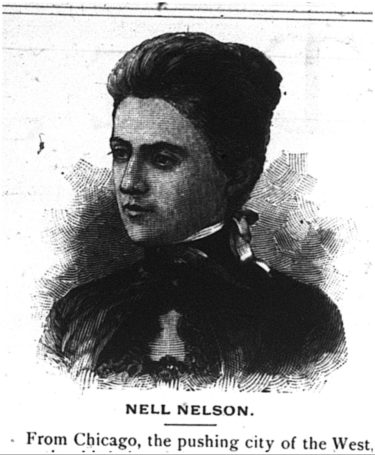
But she abruptly deflated. While others documented laundries with wet floors that soaked workers’ boots and unventilated textile mills, Cusack focused on the impossibility of making a living. She also created striking portraits of those impacted by the scramble for pennies. At the Western Lace Manufacturing Company, Cusack lingered in the lobby with Martha Rhafferty, who had been crocheting mats for six months in an effort to earn $15 (at a time when lodging could be $3 a week). To get the job, Rhafferty had to give up a deposit of $1 an additional $2 for lessons. Now, as she waited and waited, it seemed increasingly unlikely she would see any money at all. At other factories, workers paid for thread, paid to use the sewing machines, paid for ice water. The next day, Cusack visited the Never-Rip Jersey company, where she made 25 cents for finishing five jerseys. Among the 120 women crammed into the small space, Cusack introduced readers to a girl who had immigrated to the U.S. six months earlier with her sister, tried many jobs in an effort to make a decent wage, and passed out from exhaustion in the bathroom.
On her way home, the reporter stopped into the salesroom and found the same shirt she finished for 5 cents selling for $2.
Like Bly, Cusack was unabashed about her journalism’s activist intent. When she conducted New York factory investigations for The World later in the year and visited one of the young women in her tenement apartment, Cusack wrote:
When a family of eight can thrive in one room, when five cents a day will board the father and half a pound of prunes with butcher’s scraps provide a soup for maintenance of wife and children; when $3 is accepted as a fair compensation for seven days of labor of eleven hours each; when a foul-smelling, overheated, ill-ventilated fire-trap is regarded as an ideal workshop—then it seems that the time has come for action of some kind.
GIRL REPORTER: Scenes on a taboo topic
After its success with Cusack, the Chicago Times upped the ante. Just a few months later, the fall of 1888, it launched a series on the availability of abortion, which was illegal at the time. At first, a male reporter visited doctors alone, saying he was looking for options for a sister in trouble. But when this aroused suspicion, a woman joined him, using the pseudonym “Girl Reporter.” (Her actual identity is still unknown.) She took over the narrative.
Each encounter was a miniature scene. The Girl Reporter sketched the office, the physician, the lengthy justifications. This structure illuminated not just whether a given doctor would perform the operation, but attitudes about the procedure and the women who needed it. In her undercover role, Girl Reporter was offered pills, sympathy, surgery, places to stay while recovering. And also sermons, double standards, and insults.
In “a handsome stone front” on Washington Avenue, she approached Dr. W.F. Knoll and related the following exchange:
'Is the man you say is with you your brother?’
‘He is; you can judge for yourself when you see him.’
‘That alters the case. If he were the man who is the author of your coming in this condition, I would do nothing but use every power of the law to force him into marriage…. But there is another kind of case if the man be your brother in sorrow and trying to help you out. I’ll tell you my view. This is against the state law. My conscience is my law. When the dictates of my conscience are different from those of the law, I break the law and obey conscience….When I see a young lady who has been led astray and fallen, and seeing the wrong of it makes all effort to retrieve herself and start anew, I would do anything to save her name and spare her any shame. A woman should have the same chances a man has (amen) and society makes it much harder. When I can help save one I am ready.’
‘Well, you will then do the work?’
‘Well, send your brother in and we will talk it over. If I do not, I would get someone for you who will, or will put you in way of finding someone.’
He pulled out a card, and the Girl Reporter noted that he cut his potentially incriminating name off and handed her the office hours for her reference.
The abortion series ran through December, page after page of difficult but revealing conversations. Though she was ostensibly furious at those who offered an abortion and lauded those who refused it, she captured the complex nature of an operation everywhere condemned and, as her work revealed, endlessly available.
WINIFRED SWEET: Distinct point of view
When Winifred Sweet arrived in San Francisco, her sister, a Chicago reformer aware of the daring work of young newspaperwomen in that city, encouraged Sweet to give journalism a try.
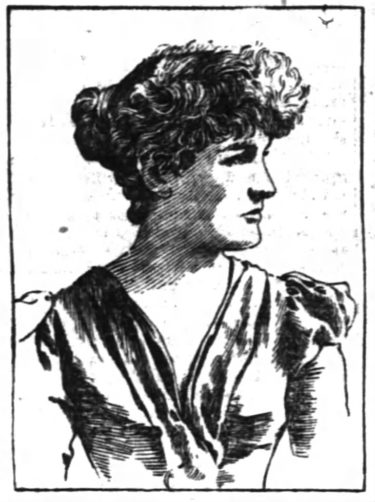
Her first major article, “A City’s Disgrace,” January 19, 1890, written for the San Francisco Examiner under the pseudonym Annie Laurie, opened with a description of the reporter from the outside: a mysterious figure with only a dime and a help-wanted ad in her purse who stepped off a streetcar at the corner of Market and Kearny and collapsed.
Sweet anticipated documenting a jolting 20-minute trip to the hospital in a police patrol wagon, highlighting the city’s lack of an ambulance. Like many female reporters of her day, Sweet employed humor, often at her own expense. (Of a foray into theater pre-journalism, she noted, that while she had considered herself a “heaven-born genius” as an actor, friends generally thought she was a “stage-struck idiot.”) Her reporting nods at her lingering love for drama. Eyeing a stack of cardboard boxes to cushion her faint, she wrote, “As I neared the boxes I gave a sudden start, put my hand to the back of my head, turned my eyes upward and started—to fall.”
But she ended up reporting about treatment of anonymous women at the city’s public hospital and the dangerous nature of a “hysteria” diagnosis. When a Dr. Harrison was told the patient (Sweet) refused to take medicine, Sweet reported the rest of the scene:
’Give her a good thrashing and she’ll take it,’ said the new arrival, laughing at my struggles.” And then “The doctor took two strides and was beside me. He gripped my neck with both hands, digging his thumbs into the hollows below my ears.
I screamed with pain and rage and managed to push him aside.
This seemed to infuriate him. He grabbed me by the shoulder with so fierce a grip that my shoulder is lame yet. It took the skin right off. He threw me backward on to the bed with spiteful vehemence and snarled: ‘let her lie there, and if she makes any fuss strap her down.’
In later articles, Dr. Harrison, long rumored to be trouble for women, reiterated that if he deemed a patient hysterical, he’d “advise the parents to give the girl a good thrashing.” He was fired, and Sweet launched a 40-year journalistic career that included coverage of the Galveston Hurricane and the San Francisco earthquake.
Echoes that reverberate today
These accounts — their methodology and social significance — echo through work like “Nickel and Dimed” by Barbara Ehrenreich, “Without You, There is No Us” by Suki Kim, and “American Prison” by Shane Bauer. But the investigations by these women are often written off, even today, as trivial. Bly, Nelson and Sweet were deemed “stunt reporters.” Those who, at the turn into the 20th century covered trials, offering a needed perspective at a time when most juries banned women, were called “sob sisters,” gush girls,” “the pity platoon.”
Yet the very term “sensational,” used to label this reporting as frivolous, covers strategies now considered strengths — letting readers access the story through sensory detail, an engaging narrator, tension-filled scenes. To be taken seriously, these techniques had to be picked up by male reporters and rebranded by Tom Wolfe in the 1970s as “New Journalism.”
The early female “stunt reporters” took their journalism seriously, even though others did not. One of the most moving aspects of paging through these old articles is the way the young women described their ambition for writing careers. The Girl Reporter of the Chicago Times noted, “It used to be the dream of my childhood that I would some day become a writer—a great writer—and astonish the world with my work.” And when, after stringing for a while, Sweet was eventually offered a full-time job at the Examiner, she was dazed by her good fortune. As she wrote in her memoir, she “walked out into the quiet of a sunny Sunday afternoon hardly knowing where I was or what I was doing.”
Like Bly’s asylum reports, the words slice through time. They resonate with what I see in my students: the exhilaration of carving a difficult path and the relief of writing something that matters.
***
KIM TODD is the author of four books of literary nonfiction, including the recent "Sensational: The Hidden History of America’s 'Girl Stunt Reporters.'” She is on the faculty at the University of Minnesota. You can find her at www.kimtodd.net
